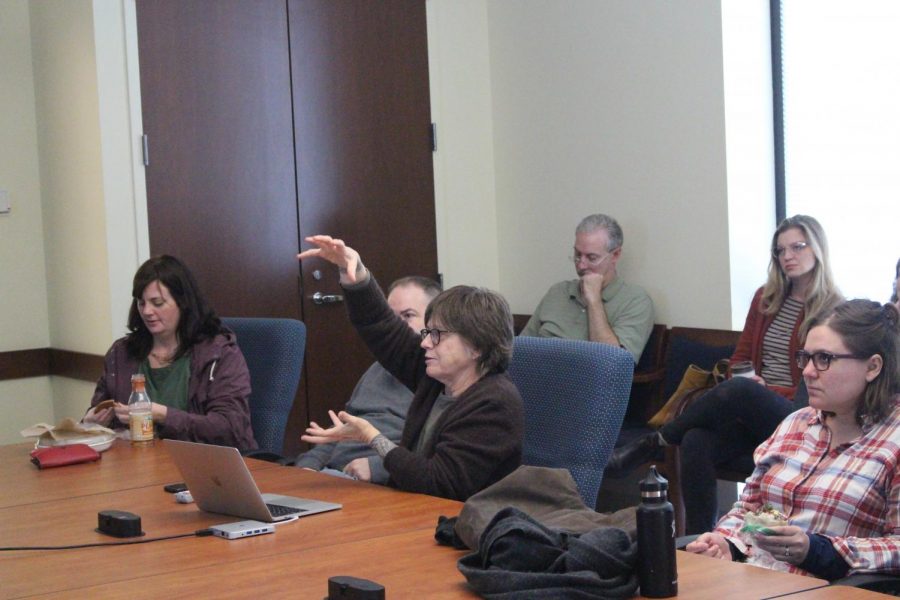‘Talent is a bad word’: The art of teaching and connecting with students
Fine arts professor Debra Clem discusses creative solutions from her students influencing her own work
Professor Debra Clem discusses what brings her joy in teaching as she shows off dozens of artworks created by both herself and her students.
November 17, 2019
The relationship between instructors and students was on full display as Debra Clem, fine arts professor and program coordinator, showed off dozens of works of art on Thursday, Nov. 14 to a group of students and fellow faculty.
Clem used the event, aptly named “Joy of Teaching,” to discuss what brings joy to her teaching.
She began the presentation with a self-quote that said she sees a “seamless relationship” between what she does as an artist and the knowledge she shares with her students. The quote ended by saying that she is a “far better artist” because of her students.
The art presentation went on as Clem discussed and showed off her early works as well as work from students. She then shared what she teaches, mentioning oil paintings and the first project being a black and white painting, where students “mix their own black.”
Clem mentioned some of her interests, including “a traditional approach,” “varying materials” and “non-traditional alternative media.” She went on to discuss her experiments with a former student named Jonathon Ruth before the invention of Photoshop.
Later, Clem talked about Samantha Dietz, a painting BFA student who taught herself — and then Clem — how to use encaustics. According to Clem, encaustics are an ancient wax painting process that is totally compatible with oil painting.
Clem said in the late 2000s, digital printing became affordable. This was nice, she said, because “digital images could be printed on canvas.”
She then discussed how she experiments with different techniques, including adding acrylic paste to her works for texture purposes.
Clem ended the presentation by showing some of her most recent works, where she is experimenting with tattoos. She is also painting on circular formats, an assignment she also gave to her students.
Takeaways From The Presentation
After the presentation, Clem said there are a few things she would like people to take away from her presentation. The first is about arrogance and collaboration with students.
“I always think that it is arrogant to think that you know everything about your field,” Clem said. “I know my field really well. I think I am a very good painter, but it is a lifetime discipline.”
“I think teaching is collaborative. With this, with the creative kind of thing, [students] have good ideas.”
The second takeaway Clem mentioned is about people using the word “talent.”
“The other takeaway is that the word talent is a bad word for me,” Clem said. “It is a bad word because it implies that this is not teachable.”
“I would not be at a university if I thought that [art] was a magical skill that people were born with. I can teach you to draw.”
“Anybody that wants to learn this can learn it. I think it is more of just the desire to learn.”
The takeaway for Brian Harper, associate professor of fine arts, was the interconnectedness between Clem’s work and her students’ work.
“I did not realize there was so much interconnectedness between her own work and her students’ work,” Harper said. “I knew it was there, but I did not know the extent of some of that.”
“Seeing her go back and forth between her students’ artwork and her own artworks and talking about the different ways they inspire each other was really cool,” he said.


